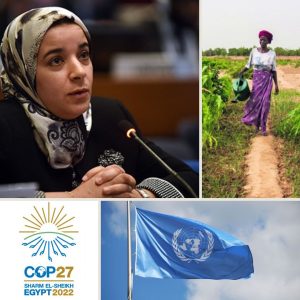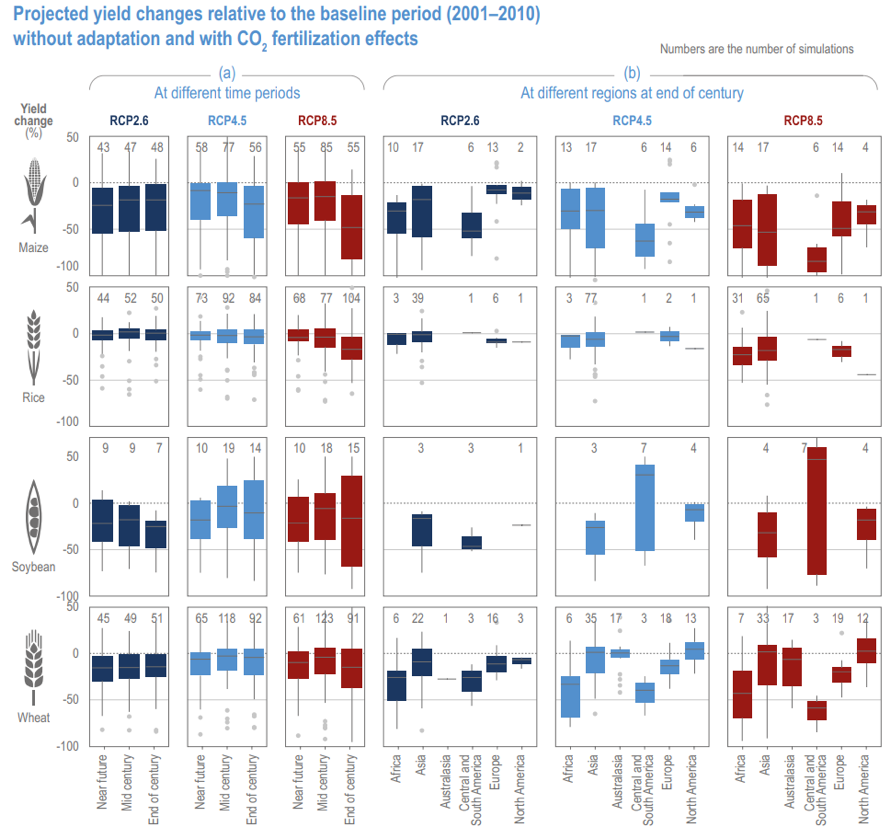Fatima Driouech (IPCC): “Agriculture offers significant potential for GHG mitigation”
Vice-president of Working Group 1, member of the bureau of the Intergovernmental Panel on Climate Change (IPCC), the Moroccan researcher gives us some keys to understanding the important climate project that lies before us.

FARM Foundation: At the time of COP27 In Egypt (November 7-18), the world is focused on climate issues. In its various reports, the IPCC draws attention to the vulnerability of the agricultural and livestock sectors to the effects of climate change, including the risk of production losses. What trends are observed today?
Fatima Driouech: With the 6th IPCC assessment report We have an understanding of the scientific and physical basis (Working Group 1 report) of climate change. We have thus drawn up the picture in terms of changes already recorded in the climate system, their human causes and the future changes that will have to be expected depending on the trajectories taken in the future and the level of global warming (1.5°C, 2°C or more).
We live in a world where climate change has already begun to manifest itself. It is widespread, rapid, and intensifying, causing dangerous impacts and disruptions to nature. It affects the lives of billions of people, despite adaptation efforts that remain insufficient.
Climate change has reduced food and water security, hampering efforts to achieve the Sustainable Development Goals (SDGs). Increasing negative impacts are observed globally and in several regions such as Africa, the Mediterranean region, Australia, South and Central America. Climate change has slowed agricultural growth globally over the last 50 years. Regional economic damage has also been detected in this sector despite some positive economic effects identified in regions that have benefited from lower energy demand and comparative advantages in agricultural markets. Overall, the reduction in agricultural productivity has impacted individual livelihoods.
FF: In his 6th assessment report, the IPCC returned to the changes in projected yields according to the different scenarios, can you detail certain plant productions?
FD: Working Group 2 produced analyses on this subject. This working group assesses the impacts of climate change by examining ecosystems, biodiversity, and human communities at global and regional levels, and also reviews the vulnerabilities, capacities, and limitations of human and natural systems to adapt to climate change. The literature review conducted by IPCC members shows that the projected impact of climate change on crop yields, without adaptation, is generally negative, even with the effects of CO2 fertilization. The overall median effect per decade is -2.3 % for maize, -3.3 % for soybeans, -0.7 % for rice, and −1.3 % for wheat. A very high vulnerability of rainfed agriculture, which is largely practiced in developing countries and is a pillar of food security, is also clearly visible. Current crop and livestock areas will become increasingly unsuitable for the climate in a high-emissions scenario (e.g., 10 % of suitable areas will no longer be suitable by 2050, more than 30 % by 2100 under SSP-8.5). (editor's note: the extreme scenario) compared to less than 8 % by 2100 under SSP1-2.6 (editor's note: a low-emission scenario))This further highlights the importance and necessity of mitigating greenhouse gas emissions.[1].
It should also be noted that adaptation will reduce climate change risks in agriculture, but will not eliminate them completely. Currently available crop management options have the potential to offset global agricultural production losses due to climate change up to a warming of about 2°C, but negative impacts, even with adaptation, will increase significantly from mid-century under high-temperature change scenarios.

Source: IPCC, 2022: Climate Change 2022: Impacts, Adaptation, and Vulnerability. Contribution of Working Group II to the Sixth Assessment Report of the Intergovernmental Panel on Climate Change [H.-O. Pörtner, DC Roberts, M. Tignor, ES Poloczanska, K. Mintenbeck, A. Alegría, M. Craig, S. Langsdorf, S. Löschke, V. Möller, A. Okem, B. Rama (eds.)]. Cambridge University Press. Cambridge University Press, Cambridge, UK and New York, NY, USA, 3056 pp.
FF: What is the current state of knowledge about the impacts of climate change on oceans and seas and the socio-economic risks that this can cause for producers and populations?
FD: The livelihoods of 10 to 12 % of the world's population depend on fisheries and aquaculture. The status of marine fisheries resources has steadily declined in recent decades and the proportion of fish stocks at biologically unsustainable levels of exploitation increased from 10 % in 1974 to 34.2 % in 2017. Ocean systems are already and will continue to face significant impacts of climate change through rising sea water temperatures, marine heat waves, salinity change, acidification, etc. All these new physical, chemical and biological conditions affect the physiology, distribution and ecology of marine organisms, with an overall change in biomass and species composition affecting ecosystem structure and function.
FF: In the run-up to COP 27, scientists have spoken out about the risks of inaction, particularly for developing countries, particularly in Africa. What is the current state of climate risks facing Africa, and what are the adaptation solutions?
FD: Despite its low emissions, the African continent is among the regions most impacted by climate change. In particular, it is among the regions with the highest projected changes in intense thermal (heat) stress, the highest projected changes in droughts, and the highest projected changes in extreme sea-level rise. Several key development sectors have already suffered significant losses and damages attributable to anthropogenic climate change, including biodiversity loss, water shortages, reduced food production, loss of life, and reduced economic growth.
In future terms and assuming localized and gradual adaptation (between 1.5°C and 2°C global warming), impacts are expected to become widespread and severe in terms of reduced food production, reduced economic growth, increased inequality and poverty, loss of biodiversity, and increased human morbidity and mortality.
Adaptation in Africa has multiple benefits, and most of the adaptation options assessed have some effectiveness in reducing the risks of current climate change. Examples include strengthening and adapting water infrastructure, financial investment in sustainable agriculture, crop irrigation, and adjusting planting periods. Improved soil and water conservation, improved agricultural productivity, and drought resilience are examples of adaptation benefits in agriculture. However, the effectiveness of current adaptation options for future climate change is largely unknown for the continent. This highlights, once again, the importance and necessity of mitigation.
FF: Agriculture is both responsible for a portion of greenhouse gas emissions and a victim of their consequences. Can't it also be part of the solution by offering mitigation opportunities?
FD: Although it cannot offset delayed emission reductions in other sectors, the agriculture, agroforestry, and land use (AFOLU) sector offers significant near-term mitigation potential at relatively low cost and can provide 20 to 30 % of the 2050 emission reductions described in scenarios limiting warming to 2°C or less. Mitigation measures based on forests and other natural systems offer the largest ratio of GHG reduction potential in this area by 2050. Agriculture and demand-side measures are the next largest contributors.
Deploying land-based mitigation measures can offer co-benefits, but there are also risks and trade-offs associated with inappropriate land management. These risks can be better managed if AFOLU mitigation takes into account the needs and perspectives of different stakeholders. Land planning and management based on up-to-date data and information and taking into account current and future climate change can facilitate trade-off processes while maximizing benefits and minimizing trade-offs. Integrated responses that contribute to mitigation, adaptation, and other land-related challenges will have a greater likelihood of success.
[1] See the Working Group 3 report, which provides an updated global assessment of progress and commitments on climate change mitigation, and examines global emission sources.
